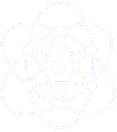Template Technique
The server provides a sophisticated template technique. Templates can be used
to generalize a special design to remove a great deal of redundancy
from the code. The idea is to split a page into smaller pieces, thus
separating content from layout, static from dynamic, text
from programming areas. Templates and generic elements can be imported and inherited
from the page hierarchy tree.
Templates may be defined my a Perl template function or you can be stored in
the content database. Use the 'DB-Template' or 'CGI-Template' generation type
to choose.
For both generation types, templates types are used for grouping purposes.
Templates then belong to a special template type and are referenced by their name
and maybe the template number.
Simple template main element with embedded Maxscape API methods:
<!DOCTYPE html>
<html>
<head>
<title>
@{[ $Page->ElementContent (Name => 'Title') ]}
</title>
<style type="text/css">
@{[ $Page->ElementContent (Name => 'Category.CSS') ]}
@{[ $Page->ElementContent (Name => 'Template.CSS') ]}
@{[ $Page->ElementContent (Name => 'Page.CSS') ]}
</style>
</head>
<body>
@{[ $Page->ElementContent (Name => 'Category.PageHead') ]}
@{[ $Page->UserElementLoop() ]}
@{[ $Page->ElementContent (Name => 'Category.PageTrailor') ]}
</body>
</html>
Template Types
For a given page generation type, Template Types are used to define a set of similar templates, elements and page generation functions. Different templates of a special template type may be used to implement different page designs/layouts.Template types may be user defined. Also some template types are predefined e.g. for the 'DB-Template' generation type:
- ElementTemplate
- The 'ElementTemplate' defines some standart elements and adds additional HTML code.
- plainTemplate
- No elements are predefined. The page is constructed only from the templates and elements.
T he templates may be configured via the appropriate entries in the configuration file. Set the variable WebServer.lookupWebServerTable to '1' or '2', to enable loading of data from the WEB_SERVER table.
Template Type Configuration
The page generation process can be configured via entries in the $::WebServer object. The ElementCallback entry defines the function to pre process elements during the elements fetch phase. The Function entry specifies the general template main loop function. If functions of the related names are defined via the application plugin, the internal default functions are overwritten.
Database templates are best located in the Templates sub tree of the servers page tree.
Default Template Elements
You can put the desired default database elements for a given type into a file located under the application server's tables/templates directory. The name of this file is the same as the template name. These elements are inserted, when a page is added by the administration surface.
Calling Functions in Templates
A general mechanism to call functions within database templates is, to embed
Perl closures directly into the template code. To actually call the closures
an additional evaluation of the code can individually set for each template
and/or template element.
An embedded application function should take a reference to the 'maXscape::Page'
object as the first parameter.
Thus, all of the previously collected data are accessible in this function, including
the database elements that contains the pages content.
Template Example
The following example is provided by the distributions 'Test' web server. The template name is 'simpleLayout':
<html>
<body bgcolor="#FFFFFF" text="#000000">
@{[ $Page->printElements() ]}
</body>
</html>
As you can see from this, the general page design is implemented by the
template, thus reducing the static and therefor redundant HTML code by
the number of pages minus one (the template!).
The source code of the example shows, that you can mix the HTML code with
PERL closures. The closures executes the embedded function or method calls.
Adding Template Types to the Server
To add a new 'Template Type', add the name of the new 'Template Type' to the:
'Page.Type.<Generation Type>'
entry, via the 'server form' of the admin server. After this add the following entries to the WEB_SERVER table, using the server form or the 'MaxAdmin' tool:
Page.Type.<Generation Type>.<Template Type>
Page.Type.<Generation Type>.<Template Type>.ElementCallback
Page.Type.<Generation Type>.<Template Type>.Function
For example:
...
Page.Type.CGI-Template:
ElementTemplate
plainTemplate
Function
...
Page.Type.CGI-Template.Function:
TableLayout(140)
TableLayoutTopBottomMenu(145)
defaultHomePage(171)
defaultGroupHomePage(260)
UserGroupTemplate(185)
Simple(270)
simpleTemplate(271)
BodyFunction(279)
FuntasyHome
simpleHeadTrailorMenu
Page.Type.CGI-Template.ElementTemplate.ElementCallback: processElement
Page.Type.CGI-Template.ElementTemplate.Function: PageStandardSkeleton
